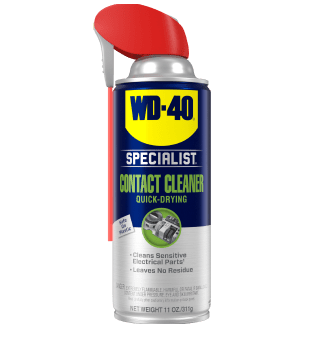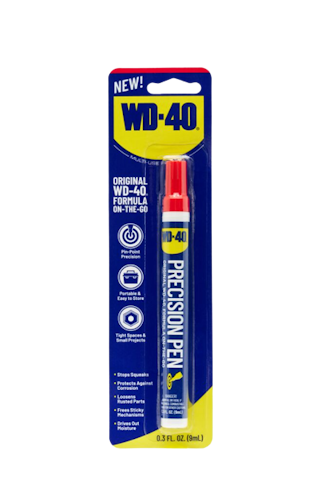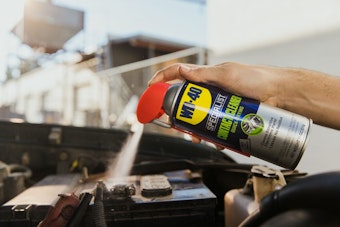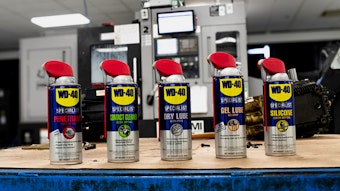How to Properly Apply Contact Cleaner to Electrical Components
How to Properly Apply Contact Cleaner to Electrical Components
<< BackMaintaining your electrical equipment and electronic systems is paramount to ensuring optimal performance and longevity, but too often these components and systems are neglected. Over time, contaminants like oil, dirt, flux residue and condensation build up on your electronics, resulting in reduced efficiency, overheating, failures and even injury to employees.
Electrical contact cleaners have been specifically designed to address the accumulation of contaminants on electrical equipment and electronic systems by effectively removing dirt and grime build-up, ensuring your electrical systems and electronics operate at their peak.
In industrial environments, electrical contact cleaners form part of most maintenance activities ranging from routine inspections to emergency repairs. Because of its wide use and the importance thereof, the correct contact cleaner can be the defining factor between successful or disastrous maintenance activities.
Understanding Contact Cleaners
Electrical contact cleaners are predominantly categorized into two groups, namely solvent-based and non-solvent-based. Each of these has its own benefits and specific activities in which it shines.
Solvent-Based Contact Cleaners:
Solvent-based electrical contact cleaners, like WD-40 Specialist® Contact Cleaner, contain alcohols and hydrocarbons. They are designed to be used in industrial environments to tackle stubborn contaminants. These cleaners are known to quickly dissolve contaminants and evaporate rapidly without leaving any residue.
They are ideally suited for heavy-duty cleaning tasks like cleaning electrical contacts and connections in industrial environments, such as control panels, circuit breakers, and motor control centers.
Non-Solvent-Based Contact Cleaners:
Non-solvent-based electrical contact cleaners have no solvents in their formulation (as the name suggests). They are traditionally water-based but may also have a silicone base.
They are designed to gently clean electrical components without causing damage to materials like plastic and rubber surrounding the components. They are ideally suited to clean delicate or sensitive electronic components, such as those found in medical devices or precision instruments.
Selecting the Correct Contact Cleaner:
When it comes to selecting the correct electrical contact cleaner, there are a few key characteristics of the specific formulation to take into account.
- Quick-drying: Ensuring an electrical contact cleaner evaporates quickly is important for faster maintenance activities. The quick drying characteristic of a product is also important when it comes to safety. If any conductive liquid is present on a connection of the electrical system when it is switched on, short circuits, fires and resulting injuries may occur.
- Non-conductive: Ensuring an electrical contact cleaner is non-conductive will mitigate any risks associated with short-circuiting or critical failures. The reason for this is straightforward, electricity cannot injure where it cannot flow. In other words, ensuring that an electrical contact cleaner is non-conductive allows safe cleaning activities.
- Residue-free: Be sure to check if the electrical contact cleaner you plan on using leaves any residue after cleaning. The residue that remains after application will attract contaminants like dirt and debris (which could ironically lead to the need for cleaning).
If you want an electrical contact cleaner spray that meets the above characteristics without going down the rabbit hole of searching, choose WD-40 Specialist® Contact Cleaner. Its Smart Straw® Sprays 2 Ways® technology allows you to blast away oil, dirt, flux residue and condensation with pinpoint precision or a wide-angle spray. It further removes 95% of common surface contaminants, dries quickly and leaves no residue, making it an excellent choice for any industrial application.
If you are looking for a contact cleaner that blasts away contaminants, find WD-40 Specialist Contact Cleaner at a retailer near you. Where to Buy
Preparation for Using an Electrical Contact Cleaner
When working with electrical equipment and electronic systems, extreme caution must always be taken. Be sure to wear the appropriate Personal Protective Equipment (PPE) such as safety goggles and follow the safety guidelines provided by the manufacturer.
Always ensure that the electrical system you are working on is de-energized, i.e. no stored energy is present in it and that the electrical system is isolated. This is of paramount importance to ensure the safety of yourself and the electrical system in question.
After donning the correct PPE and making sure that the system is completely de-energized, you can now inspect the system’s components and identify any parts that may require cleaning. Common components that require regular cleaning usually include circuit boards, switches, connectors and battery terminals. This inspection will also help you identify the correct cleaning approach and any additional tools that may be required.
Watch how to clean an industrial battery with WD-40 Specialist® Contact Cleaner to see it in action.
Application Techniques
To start, grab a can of WD-40 Specialist® Contact Cleaner and get to work. It is safe to use on most electrical equipment, plastics, rubbers and metals.
To apply WD-40 Specialist Contact Cleaner, you have the option of using a pinpoint stream or a wide-angle spray thanks to its Smart Straw® Sprays 2 Ways® technology. For small areas like battery terminals, use the straw for a pinpoint stream. For larger areas, the wide-angle spray and a clean brush are better suited to help ensure all contaminants are removed.
Before applying the electrical contact cleaner, be sure to first shake the can properly to guarantee a homogenous mixture. We recommend shaking for at least 10 seconds. See that you hold the can upright, upside down or at an angle, but never on its side horizontally. This will cause the propellant to escape and leave less in the can for future use.
To use WD-40 Specialist Contact Cleaner, simply position the Smart Straw 1 to 2 inches from the surface you intend to clean and use short bursts to cover the area without over-saturating it. Allow it to penetrate and dissolve the contaminants.
For more precise applications, you can use applicators like swabs. Spray a small amount of WD-40 Specialist Contact Cleaner onto the applicator and gently wipe the electrical component.
Luckily, WD-40 Specialist Contact Cleaner dries quickly and leaves no residue, ensuring that the electrical components are clean and quickly ready for use again.
By following these steps, you can ensure effective and safe cleaning of your electrical components, enhancing their performance and longevity.
Watch our How To Video on getting the most out of using your WD-40® Brand Aerosol Product.
Common Mistakes to Avoid
Be sure to avoid making common mistakes, like over or under-application or applying the electrical contact cleaner to energized components, to ensure you get the most out of using your WD-40 Specialist Contact Cleaner.
Be careful not to use too much electrical contact cleaner spray. A little goes a long way and overapplication has no benefits associated with it, only waste.
As we discussed above, always ensure that the electrical system you intend to clean is de-energized. We can not stress this enough. Using an electrical contact cleaner on energized systems can lead to severe damage, fire and injury.
Always use the specific cleaner for the job. An electrical contact cleaner like WD-40 Specialist Contact Cleaner is designed for use on electrical systems, using other products intended for other uses will lead to electrical short circuits and possible system failure.
Use WD-40 Specialist® Contact Cleaner for a job done right. Find this product at a retailer near you.
Using an electrical contact cleaner, like WD-40 Specialist Contact Cleaner, will ensure that electrical equipment and electronic systems function at their peak for a long time to come.
FEATURED PRODUCTS
WANT TO GET MORE TIPS AND TRICKS?
SUBSCRIBE TO THE NEWSLETTER



